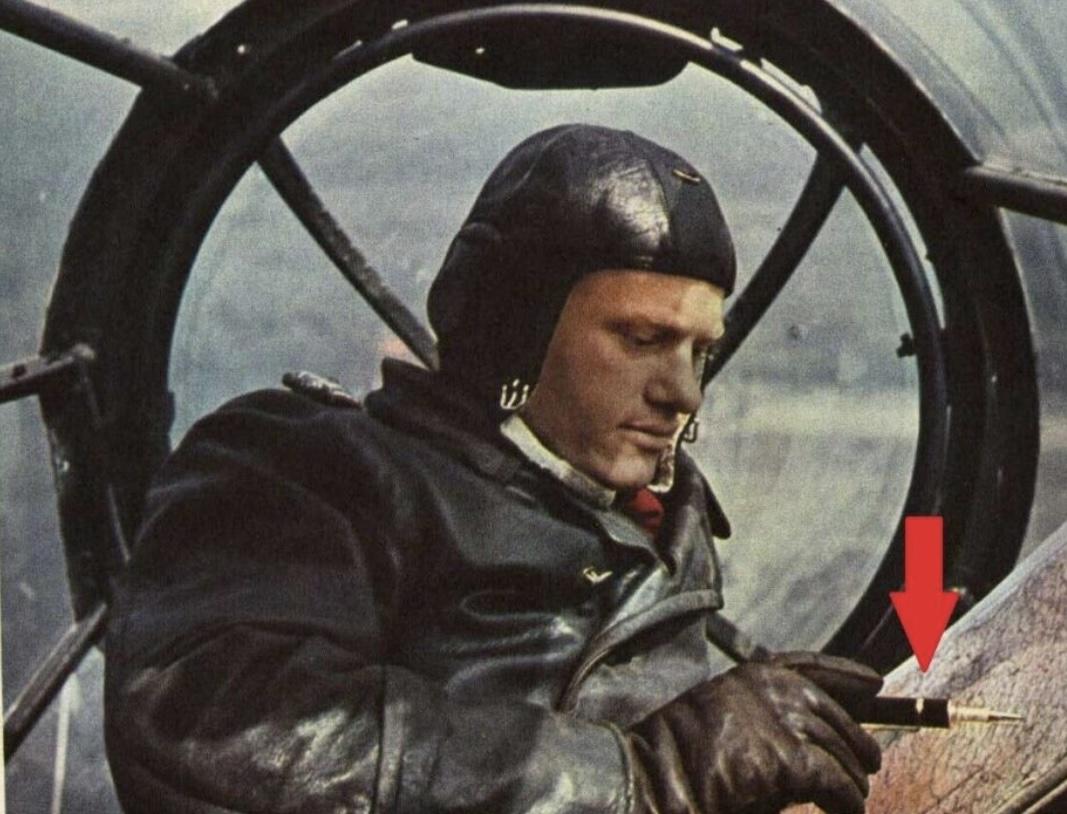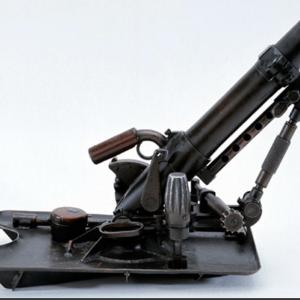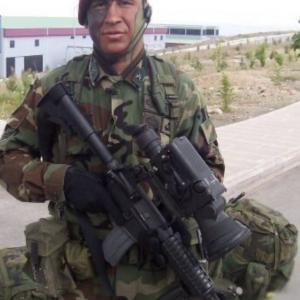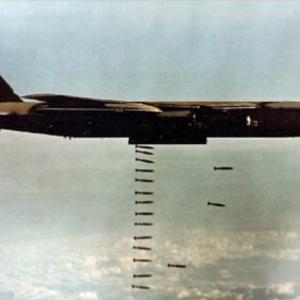
Luftwaffe light pen
During the night-flying campaigns of the Second World War, the ability to read maps, compute wind corrections and mark fixes without revealing the aircraft’s position to an opponent was a small but vital problem. Cockpit lighting—standard lamps or flashlights—created a telltale glow that could silhouette an aircraft against the night sky or make it visible to searchlights and patrolling fighters. Aircrews and instrument makers responded with several low-profile solutions; among the more ingenious was the illuminated navigator’s pen, a handheld writing instrument built with a small internal light so that mapwork could be done with the minimum of external illumination.
The illuminated pen’s basic idea was simple and elegant. A standard-sized metal or alloy pen body housed a miniature bulb and a small dry-cell battery. When the navigator needed to make notes or trace a course on a chart, he would switch on the pen; the lamp’s output was directed through a translucent section or tiny window near the nib so that the light washed the paper immediately under the tip. This localized pool of light was bright enough to see lines, numbers and compass roses clearly, yet small and directional enough to keep the aircraft’s interior from glowing. Some examples and contemporary descriptions indicate the use of colored filters—commonly red or green—to preserve the crew’s night vision and reduce the chance of detection. Red light, in particular, was widely used in military aviation because it has the least impact on scotopic (night) vision.
Construction tended to be pragmatic and robust. Barrels were usually aluminum or brass—materials common in instrument manufacture—finished in matte or darkened paint to avoid stray reflections. The lamp mechanism was often a tiny incandescent bulb seated in a simple reflector; lenses or diffusers could be incorporated ahead of the bulb so that the light spread evenly onto the paper and did not flare out into the cockpit. The battery compartment accepted small, single-use cells; replacement of the bulb and battery was designed to be done quickly, often without tools. Switches were low-profile and spring-loaded so that they could be operated by touch rather than sight. Some pens came with protective sheaths or clips to fasten to a flight jacket, keeping them at hand during the cramped, turbulent work of navigation.
In functional terms these pens were more than novelty. A navigator could, during a navigation fix or a replot after a dead-reckoning calculation, illuminate only the chart area being worked, place a pencil or fine-point stylus against the paper and write or mark without any cockpit instrument panel lights giving away the crew’s presence. The pen’s form factor made it trivial to hand to a second crew member, stash in a breast pocket, or use with one hand while stabilizing a map with the other. For small corrections, timing notes beside drift readings or pencilling in airspeed and heading into a cramped chart folio, the illuminated pen offered speed and discretion.
Manufacturing and distribution were more ad hoc than for major instrument types. Some accessories were made by specialist instrument firms; others were assembled in small batches by workshops servicing front-line units. Existing museum holdings and private-collection examples that historians have studied suggest that illuminated writing implements existed in several variants rather than as a single standardized Luftwaffe item. This diversity makes it difficult to point to a single factory or model and say categorically, “this is the Luftwaffe illuminated navigation pen.” Where surviving artifacts can be traced, they sometimes bear maker’s marks consistent with small civilian metalwork or instrument houses that contracted with the Luftwaffe, but comprehensive production records—if they ever existed—are fragmentary.
That brings us to the question of how many were produced. The honest answer is that there is no authoritative production figure available in the standard published sources I can draw on here. Surviving physical examples are rare in museum collections and among collectors, which implies that mass-production on the scale of thousands or tens of thousands is unlikely; rather, production was probably modest and geared to the needs of particular units or procurement channels. A plausible estimate—based on the scarcity of surviving specimens, period procurement practices for aviation accessories, and wartime material priorities—would place numbers in the hundreds to low thousands, but that should be treated as conjectural rather than definitive. For firm numbers, a researcher would need to consult Luftwaffe supply records held in archives such as the Bundesarchiv-Militärarchiv or examine wartime contracts and correspondence from known instrument manufacturers.
There is also a human story behind the device. Crews remembered small inventions like illuminated pens as practical companions that reduced stress on long sorties: the quiet device that let a navigator trace a fix while the rest of the crew kept watch, the pen passed from hand to hand in moonless conditions. The pens also reflect the improvisational spirit that wartime constraints produced—simple technologies recombined to meet very specific operational needs.










